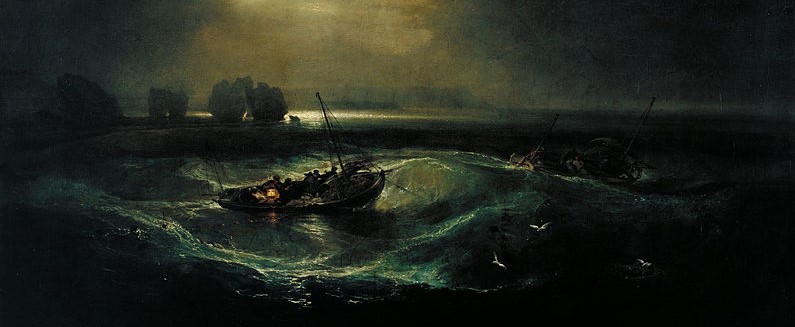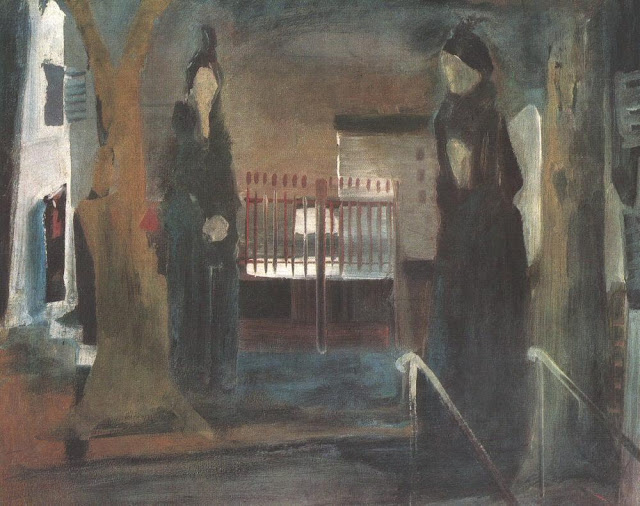István Farkas, Mujeres de negro, 1931, témpera sobre madera, 80 x 100 cm. Colección particular
(Click sobre la imagen para ampliar)
"But Farkas, who kept pace with his eminent contemporaries in Paris, now created an independent world, one in which were linked the culture of the vanished Austro-Hungarian monarchy--of Musil, Rilke, Kafka, and Freud--and the modern existence evoked by the early existentialist writers. Farkas forged a deeply personal and symbolic visual language during this difficult and ultimately tragic period. In his paintings, he often depicted a mysterious universe populated by alienated, ghostly figures and hostile objects which can be interpreted as both meditations on the frailty of human existence and premonitions of his death."
https://sites.google.com/site/geokerk/istv%C3%A1nfarkas

